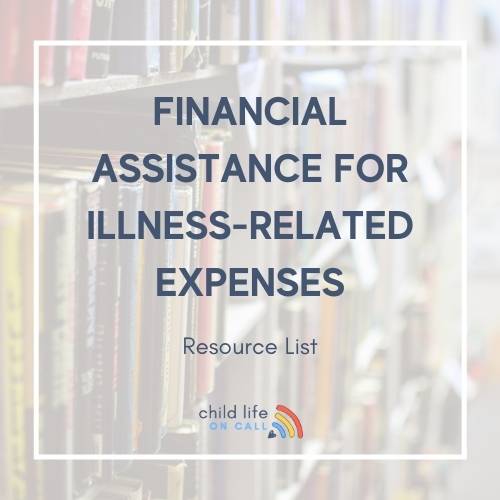Integrating Technology into Child Life
In today’s rapidly evolving healthcare landscape, technology plays a pivotal role in enhancing the quality and accessibility of child life services. As a certified child life specialist and a mom, I’ve seen the direct impact of tech-based solutions in supporting children and families during healthcare experiences. Learning how to integrate technology into child life isn’t just a small feat; it’s a necessary step towards providing comprehensive care and support for families navigating pediatric healthcare challenges. Have you found yourself curious about how integrating technology into integrate child life could make a huge difference for your hospital or organization?
For example, Sarah Lanham’s journey into the world of virtual child life specialist began with a twist of fate. When her hospital had to downsize their child life program due to the pandemic, she found herself on a unique path. She had been laid off from her role as a child life assistant and was navigating apracticum and internship. In the background, the hospital had initiated a virtual program for children needing pre-surgical tours.
The concept was new, but the demand was high. With a stroke of luck, a position opened up just as Sarah returned to the hospital as a PRN. The role was hers. Sarah now had the opportunity to shape and grow a program that was transforming the healthcare experience for children and parents alike. She found that speaking with the children from the comfort of their homes, answering their questions, and alleviating their fears before surgery was far more impactful than she could have ever imagined.
Technology can help reach more families than ever before.
Assessing Your Current Resources
First, before diving into the digital world, it’s crucial to evaluate your existing resources. What tools and services are currently in place? How effectively are they meeting the needs of the children and families you serve? This assessment will guide you in identifying the areas where technology can have the most significant impact, ensuring that your efforts are both targeted and meaningful.
Identifying Appropriate Tech Solutions
Once you understand your needs, the next step is to explore the various technology options available. Look for solutions that align with your objectives, such as apps like Child Life On Call, which offer educational materials, coping strategies, and interactive features. The key is to choose user-friendly, accessible, and relevant tools that will seamlessly integrate into your existing child life programs.
2 of our other favorite distraction and coping technologies are the amazon fire tablet and the original child life tech (ha!) push button books!
Don’t miss this research on the topic: The COVID-19 Pandemic: Technology Use to Support the Wellbeing of Children.
This article explores how technology has been used during the COVID-19 pandemic to support the wellbeing of children. It highlights the importance of technology in maintaining social, physical, emotional, intellectual, and spiritual wellbeing, especially in challenging times. This link can be particularly relevant to demonstrate the versatility of technology in supporting child life services during unforeseen circumstances.
Read more about technology and child wellbeing during COVID-19
Training and Implementation
Third, it’s important to know that implementing new technology requires a well-planned strategy. This involves training your team to ensure they are comfortable and proficient with the new tools. A phased approach to implementation can be effective, starting with a pilot program before a full-scale rollout. This allows for adjustments based on feedback and ensures a smoother transition for both staff and families.
Engaging Families and Staff
The success of integrating technology into child life services greatly depends on the active engagement of both families and staff. Communicate the benefits and ease of using these new tools, and encourage feedback. Remember, technology is here to complement, not replace, the human touch that is so vital in child life services.
Measuring Impact and Success
Fourth, once your tech solutions are in place, it’s important to regularly evaluate their impact. Are they improving the experiences of children and families? How are they affecting the workload of child life specialists? Continuous monitoring and assessment will help you refine and adapt your approach for maximum effectiveness.
Future-Proofing Your Child Life Program
As technology evolves, so should your child’s life program. Stay informed about new developments and be open to incorporating innovative solutions that can further enhance family support and care. This proactive approach ensures that your program remains relevant and effective in the ever-changing healthcare environment.
Sharing Success Stories
Finally, celebrate and share the successes and positive outcomes resulting from the integration of technology. Whether it’s through case studies, testimonials, or data-driven results, showcasing these achievements can inspire others in the healthcare community to follow suit and recognize the value of tech in child life services.
Dianne Kosto, is another example of how technology can make a difference for families in healthcare. As once a business-oriented entrepreneur, she found herself on a different path when her son started displaying signs of severe impulsivity. Her life took a sharp turn as she dived into different books, programs, and therapeutic solutions, in her pursuit to help her son. The constant volatility in the home, coupled with the uncertainty of her son’s behavior, kept her family on tenterhooks. However, hope emerged when she crossed paths with the founder of a neurofeedback company. Despite her initial skepticism, Dianne agreed to undergo training, which eventually led to a breakthrough in her son’s condition. The neurofeedback system empowered her son with the ability to pause and react sensibly, something he had lacked since birth. This discovery left Dianne both relieved and angry, as she wondered why this solution had not been suggested before. Through her journey, Dianne exemplifies the resilience of a mother’s love and the relentless pursuit
Don’t miss this resource: Children and Digital Technologies: Trends and Outcomes
This comprehensive report by the OECD iLibrary delves into how children interact with digital technologies, including social media and gaming, and the emerging trends in this space. It also discusses the diversification of digital technologies beyond screen-based media, touching on developments like artificial intelligence, machine learning, and the Internet of Things. This resource can offer insights into how digital technologies are shaping children’s experiences and the potential benefits and challenges they present.
Explore the OECD iLibrary report
Encouraging Community Collaboration
Building a community of support around your tech initiatives can amplify their impact. Engage with other child life specialists, healthcare professionals, and families to share insights, challenges, and successes. This collaborative approach fosters a culture of innovation and continuous learning within the child life community.
Sustaining Momentum
Implementing technology is just the beginning. Sustaining its use and ensuring it remains a vital part of your child life program requires ongoing effort, adaptation, and commitment. Stay dedicated to this journey, knowing that the benefits will extend far beyond the immediate, positively affecting the lives of countless families and children.
Don’t miss this: Child Life Services – American Academy of Pediatrics.
This resource offers an in-depth understanding of child life programs and their importance in pediatric healthcare. It discusses the various components of these programs and how they address the psychosocial concerns associated with hospitalization and other health care experiences. Including this link would give your audience a broader perspective on the role of child life services and the potential impact of integrating technology into these programs.
Visit the American Academy of Pediatrics
Envisioning a Tech-Enhanced Future
Are you ready to take your child life services to the next level with technology? Join us for an exclusive webinar, ‘Transforming Child Life Services with Technology’, where we dive deeper into practical strategies and real-world examples of tech integration in child life programs.
Join our 1-hour webinar to explore innovative ways to integrate technology into child life services. Gain valuable insights and tools to enhance patient care and advocacy in pediatric healthcare. Ideal for child life specialists, healthcare executives, and digital health professionals. Register now to transform your approach to child life services!















